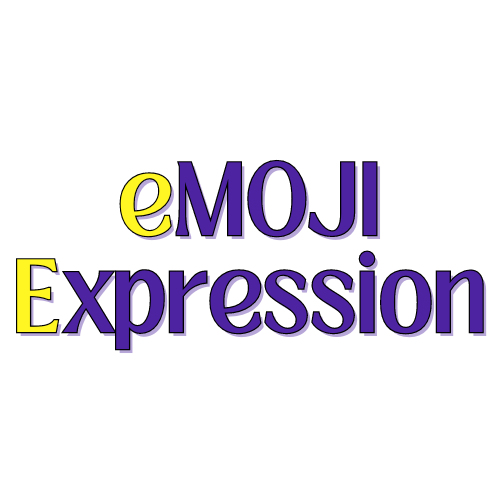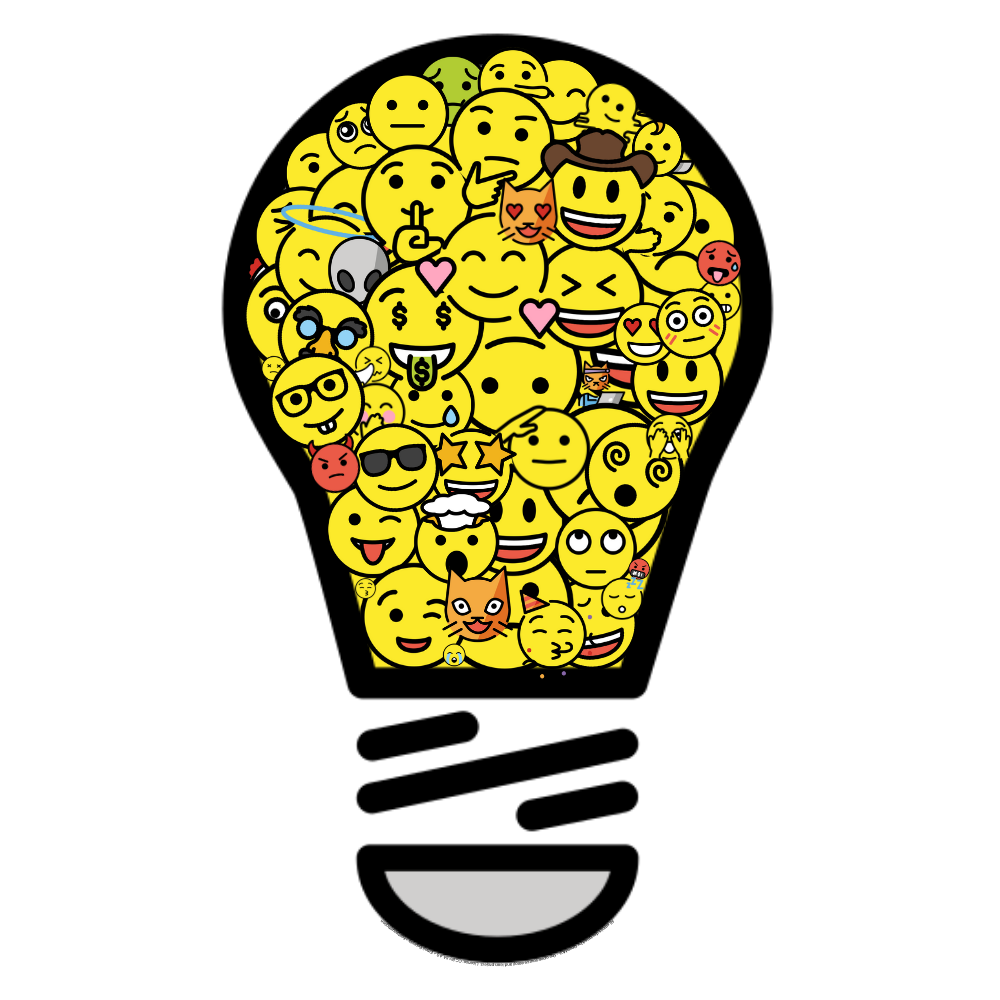The word "emoji" comes from the Japanese words "e" (meaning "picture") and "moji" (meaning "character").
Emoji are small digital pictograms used in digital spaces like messages and webpages. The primary function of emoji is to fill in emotional cues otherwise missing from a typed conversation, photograph, and video. They help convey emotions, ideas, and concepts that otherwise would not come across in text. They are commonly used in instant messaging, social media, and other digital communication platforms.
They are standardized by Unicode, a not-for-profit organization responsible for digitizing the world’s languages.
In the simplest terminology,
An emoji is a little picture that you can use to show how you feel or what you want to say when you're typing a message on your phone or computer. They are like tiny cartoons that can show your friends or family how you're feeling, without you having to write out a long message. For example, if you want to show that you're happy, you can use a yellow smiley face emoji. If you want to show that you're sad, you can use a blue frowning face emoji. Emoji are fun and easy to use, and they can help you express yourself better when you're texting or messaging someone online.
Emoji can be of different things, like smiley faces, animals, food, or objects, and they help people to express their emotions and ideas in a fun and creative way. So instead of just using words to say how they're feeling, people can use emoji to show it with a little picture.
Why Were They Created?
Emoji were originally created in Japan in the late 1990s by Shigetaka Kurita, who was working for a Japanese telecom company called NTT DoCoMo. At the time, mobile phones had become increasingly popular in Japan, but the small screens and limited character sets made it difficult to express emotions or convey complex ideas in text-based communication. (A lot of people had already been adapting text to "ASCII art" and emoticons as workarounds or "hack" to more effectively communicate.) Kurita realized that a set of simple pictograms or icons could be used to convey emotions and ideas in a more efficient and expressive way.
Kurita's original set of emoji consisted of 176 symbols, including basic emotions like happiness and sadness, as well as objects like cars, buildings, and food. The original emojis were designed to be simple and easy to understand, with each symbol fitting into a 12x12 pixel grid.
The original set of emoji were an instant hit in Japan and quickly spread to other countries and digital communication platforms. Today, there are thousands of different emoji available, and they continue to evolve and expand as new ones are added to reflect changes in language, culture, and technology.
Early on, emoji were popular mainly in Japan (many tech trends start years in advance in Japan!), but they quickly spread to other parts of the world and have now they are a part of our everyday life.
Emoji = Effective Communications
Emoji can make communication more effective in a number of ways:
-
Conveying tone and emotion - As I mentioned earlier, one of the main challenges of text-based communication is that it can be difficult to convey tone and emotion. Emoji can help to fill this gap by providing visual cues that help to clue in the recipient of the intended emotion or tone of a message.
For example, a simple smiley face emoji 😊 can convey happiness or friendliness, while a frowning face emoji ☹️ can convey sadness or disappointment. This can help to prevent misunderstandings and ensure that the intended tone of a message is accurately conveyed. Just adding the picture to the text can instantly change the impact.
Pop culture has pre-empted this a bit as Internet trends and different generations have rewritten was the meanings of some emoji or emoji combinations mean to them. There are many sites and references online dedicated to emoji pop culture now. They ebb and flow in popularity with being featured in media as well.
-
Enhanced clarity and communication: Emoji can enhance clarity and understanding in communication. By providing visual cues that help to clarify the meaning of a message, emoji can reduce ambiguity and ensure that the intended message is understood.
For example, a thumbs-up emoji 👍 can signal agreement or approval, while a red stop sign emoji 🛑 can signal that a message is urgent or important. This can help to ensure that messages are interpreted correctly and that communication is efficient and effective.
-
Adding personality and character - Emojis can also help to add personality and character to digital communication. By conveying emotion and tone in a more expressive way than words alone, emoji can help to make communication more engaging and human.
For example, a playful wink emoji 😉 can convey a sense of humor or flirtation, while a heart emoji ❤️ can convey love or affection... and even changing the color of the heart can further change the relationship of the affection or message conveyed💗💙❤️🩹. This can help to make communication more dynamic and meaningful.
Emoji can make communication more effective by clarifying tone and meaning, enhancing understanding, and adding personality and character to digital communication.
Emoji = Efficiency
Emoji can make communication more efficient in several ways:
-
Expressing emotions and tone - Emojis can help to quickly and efficiently express emotions and tone, without the need for additional words or explanations. This is especially helpful in digital communication, where the lack of nonverbal cues can make it difficult to convey tone and emotions effectively.
For example, instead of typing out "I'm happy to hear that!", a simple thumbs-up emoji 👍 can convey the same message more efficiently.
-
Reducing ambiguity - Emoji can also help to reduce ambiguity in communication. By providing visual cues that clarify the meaning of a message, emoji can help to ensure that the intended message is understood correctly.
For example, adding a laughing face emoji 😂 to a message can clarify that the message is intended to be humorous or lighthearted, rather than serious.
-
Enhancing brevity - Emojis can help to enhance brevity in communication by replacing words or phrases with a single symbol. This can help to save time and streamline communication, especially in situations where brevity is important, such as in text messages or social media posts.
For example, instead of typing out "I'm running late, I'll be there in 10 minutes", a simple running woman emoji and a clock emoji 🏃♀️⏲️ can convey the same message more efficiently.
Emoji can make communication more efficient by expressing emotion and tone, reducing ambiguity, and enhancing brevity. By using emoji to convey meaning quickly and effectively, communication can become more streamlined and effective.
Read more about how emoji are so universal and have even greater potential than they are already being used for.


